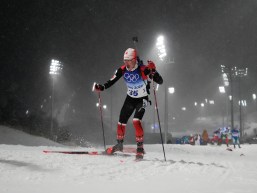We are all Team Canada on display at legacy facility of Toronto 2015 Pan Am Games
Ten years ago today, iconic Canadian artists Cirque de Soleil put on a spectacular show at the opening ceremony of the Toronto 2015 Pan American Games to kick off the largest international multi-sport event in Canadian history.
Team Canada fielded its biggest team ever and put on a historic performance of its own with a record 219 medals and emerging stars Andre De Grasse, Ellie Black, Jamal Murray and Kia Nurse leading the way.
The events were held in 16 different municipalities, designed to spread the benefits of much needed sport infrastructure across Southern Ontario. Some of the largest capital sport investments included the Toronto Pan Am Sports Centre in Scarborough (TPASC), a world class velodrome (now called the Mattamy National Cycling Centre) in Milton, and the Markham Pan Am Centre.
Ten years later, I got a chance to witness the unique legacy the Games have left behind during a day long visit to TPASC, the venue that was the biggest sport investment for Toronto 2015.
Walking into the building, it still looks almost brand new and every day it is a real beehive of activity from 5 a.m. until midnight. Last year, TPASC had a record 1.73 million visitors.
TPASC was built for $205 million with around 60 per cent of the capital costs coming from the federal government and the rest shared between the City of Toronto and the University of Toronto’s Scarborough campus. Today these partners share the facility and offer a myriad of sport and fitness opportunities for the local community, University of Toronto students, as well as high performance athletes.
This venue is probably best known for its fast Olympic-sized 50m pool, one of the best in the world, which many of Canada’s top Olympic and Paralympic swimmers now call home and which leaders at Swimming Canada say has brought about a resurgence of the sport in the country. But after I spend a few hours here talking to some of the others who use this facility, I really get a sense of how the vision to provide sport and fitness opportunities for a previously undeveloped part of Toronto has truly come to fruition.
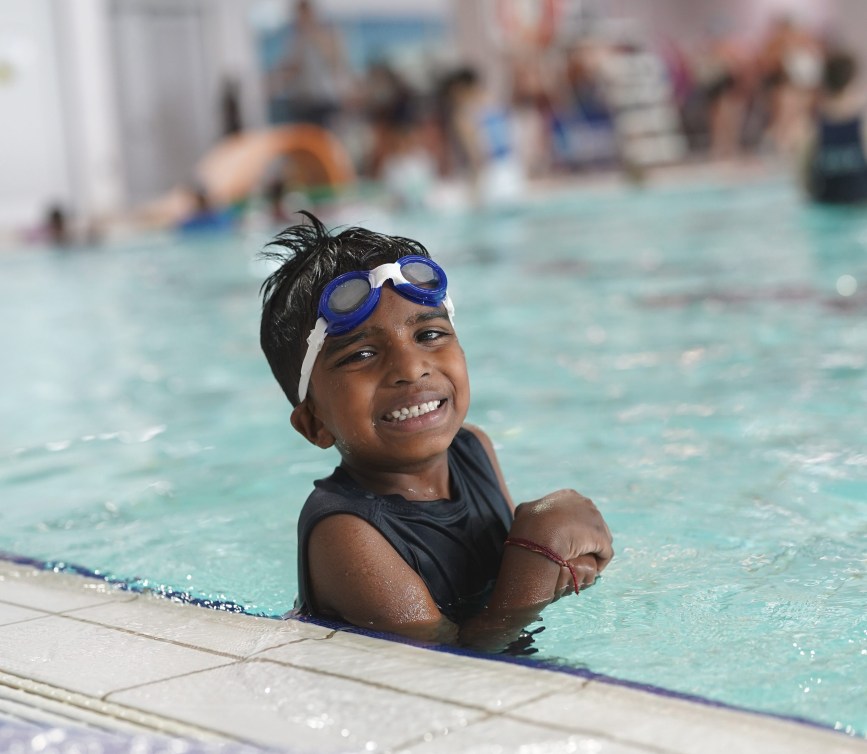
Looking down from the stands, there are hundreds of diverse faces of young children in the water this morning, many from new Canadian families who live in the area and who are learning how to swim in one of the many city run programs. Their parents are sitting in the bleachers, watching from the side.
Sivanujah Sritharan, who came to Canada from Sri Lanka as a young girl, has her three children in the program and says this building means a lot to her family.
Her youngest is six and is in the shallowest part of the pool which comes up to his chest.
“He’s still a little scared, but he’s getting the hang of it,” Sritharan says. Her two other children are eight and 10 and have been in the program for the past three years.
“They break them out of their shell and fear of swimming, and after that, they really enjoy it. My children ask me now, ‘Are we enrolled in the program?’ They can’t wait.”
Sritharan says when the children see all the other activities taking place at TPASC, they want to try them out as well, including going on the walking track above the gymnasium next door.
“It’s really eye opening for them,” she says.
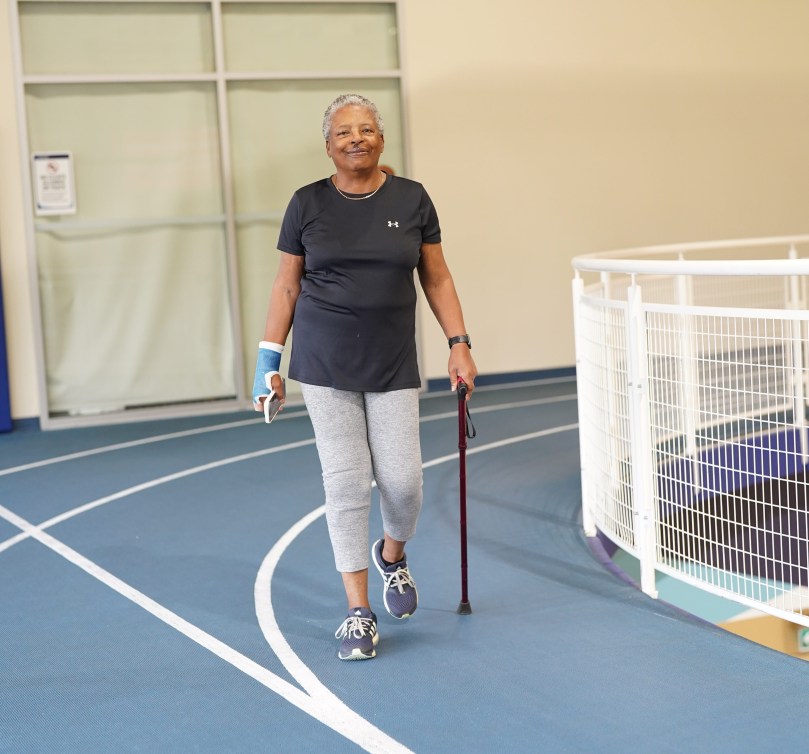
On that walking track today is Pearl Alexander, who uses a cane for assistance to complete her 10,000 steps this morning. Alexander comes three or four times a week like many other seniors.
“It keeps me walking, still standing upright. That’s a good thing,” Alexander jokes.
Alexander also swims and works out here.
“I think this building is great for keeping the community healthy. As you get older, you deal with arthritis and all kinds of other things and the more movement you have, the better it is. It really keeps me going.”
Down in the gym below the walking track, Abby Pan, a second year business management student at the University of Toronto Scarborough campus, is shooting hoops. The students get access to the fitness club and other activities as part of their student fee. Pan comes almost every day for the drop-in basketball program but some of the other university students flock to badminton and rock climbing, among other activities. There were more than 256,000 university student visits here in 2024.
“I love this building. It’s like my home. I love the gym here. I love the light that shines through. I love the view, I love the whole building,” Pan says.
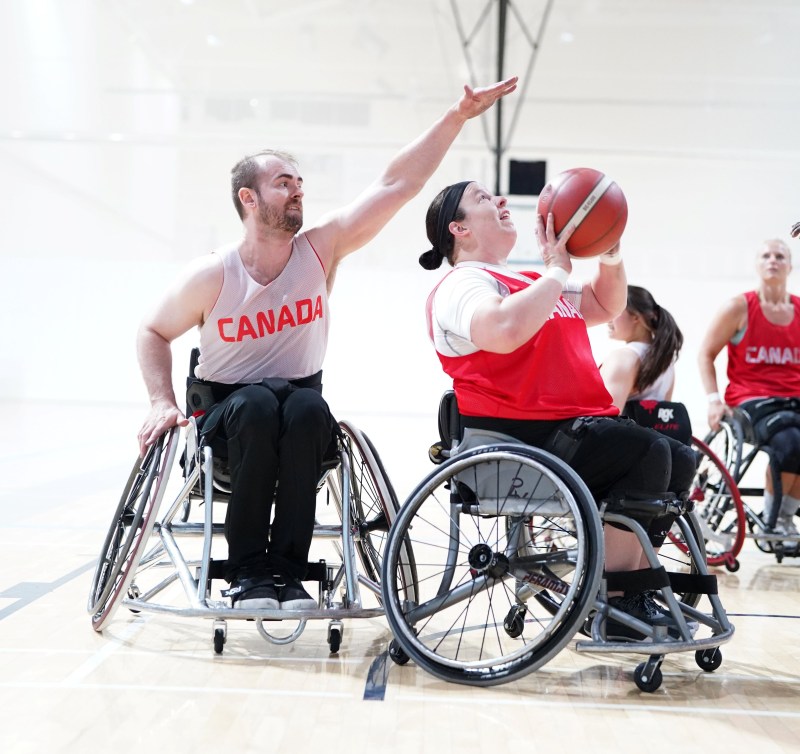
On the other basketball court in the same gym, members of Canada’s wheelchair basketball teams are playing a scrimmage game.
TPASC is the home to Wheelchair Basketball Canada’s National Academy and serves as the training ground for the sport’s top athletes. Tamara Steeves has been a member of the women’s national team since the London 2012 Paralympic Games.
“It means a lot for us to have this facility. We train here every day. It’s not just a great basketball court. There’s a weight room, a treadmill for us to work on our fitness and everything that we need to be the best we can be.”
Steeves says there’s an added benefit.
“It is just great that we can get the word out to non-disabled people about our sport. People walking around the track see us playing wheelchair basketball and they’re like, ‘Oh, you guys are so amazing’.”
TPASC is also home to the Canadian Sport Institute Ontario (CSIO), which gives every nationally carded high-performance athlete in Canada access to the CSIO’s state of the art weight training, hot and cold therapy tubs, top sport scientists, massage therapists, and many other amenities.
Debbie Low is the President and CEO of the CSIO and says there were many failed attempts to open a centre like this in Ontario just as many other parts of the country have. She says it wouldn’t exist without the Toronto 2015 Games.
“TO2015 was a game changer for us,” Low says.
She adds it was also quite significant for Canadian sport and especially for athletes from Ontario.
“The performances for athletes from Ontario have been higher than ever, better than ever. “
CSIO supported nearly half of the Team Canada athletes who competed at the Paris 2024 Olympic and Paralympic Games. In fact, CSIO-supported athletes won an impressive 17 medals at the 2024 Olympic Games and 11 medals at the 2024 Paralympic Games.
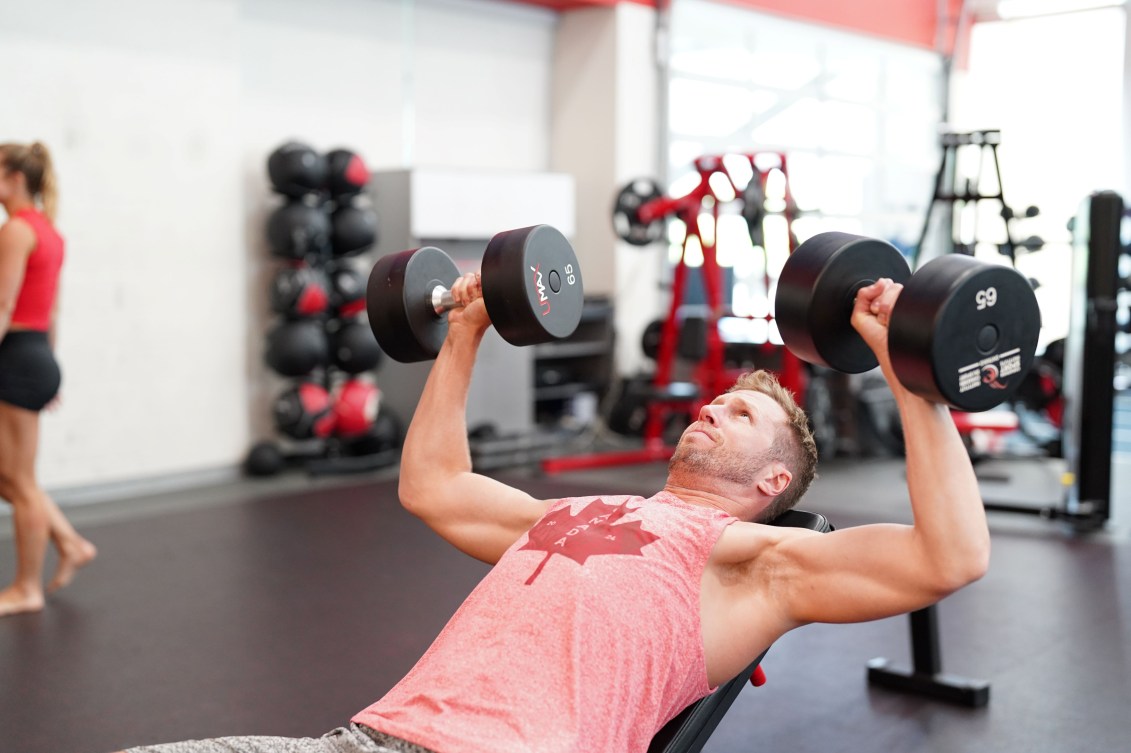
Lifting weights, underneath the CSIO’s colourful banners featuring the faces of many of those Paris medallists, is beach volleyball player Sam Schachter.
Toronto 2015 was Schachter’s first multi-sport event. He has since gone on to compete for Team Canada at the Rio 2016 and Paris 2024 Olympic Games and is thrilled to see the legacy that the Pan Am Games have left in his hometown.
“It’s wonderful, because TPASC is a facility for everyone to exercise together and move our bodies. Normally, high performance tends to segregate themselves into private gyms or exclusive facilities and having a facility where it’s so blended, it’s so nice for us to be able to connect with the community in this way.”
Schachter mentions the recent joint marketing campaign from the Canadian Olympic Committee and Canadian Paralympic Committee highlighting how We Are All Team Canada. TPASC, he says, really speaks to that.
“This building epitomizes that perfectly where we are all Canadians, coming together for a cause [sport]. I mean, you see all kinds of different athletes, people from all different backgrounds, all different abilities, no matter what their skill level, athleticism, it doesn’t matter. It is the most Canadian thing I can think of where everyone is able to come together [for sport and wellness] in a place like this.”
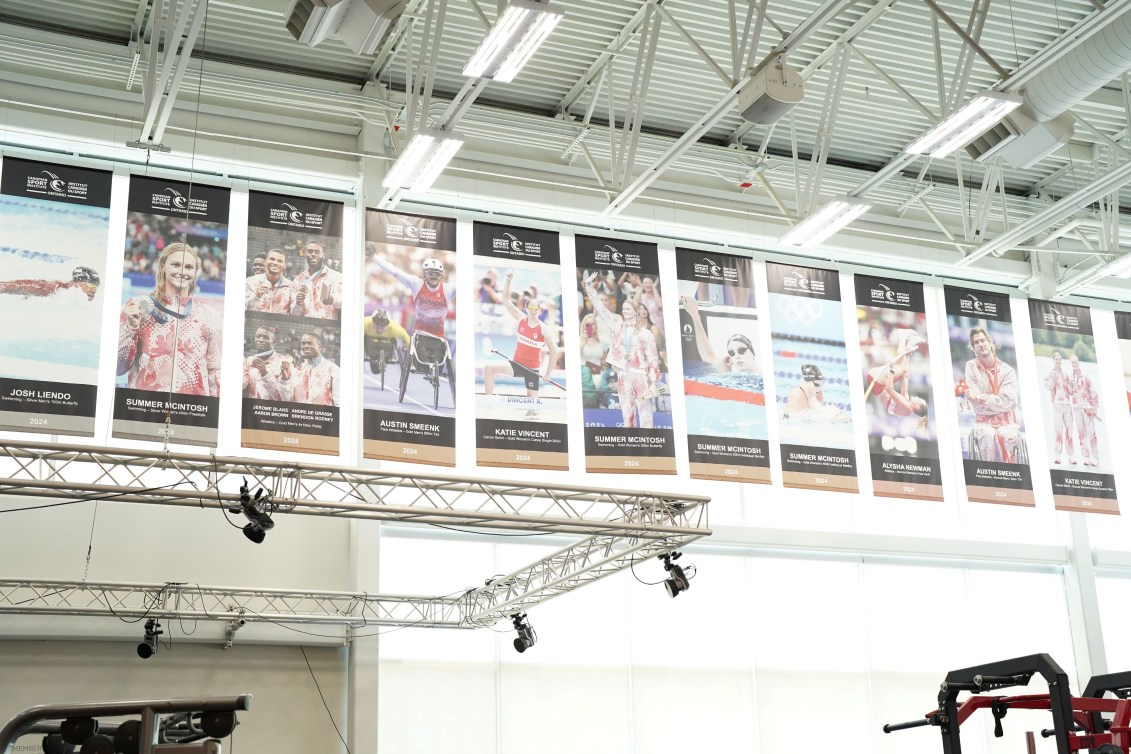
Last spring, the uniqueness of this facility was on full display when a fire in Montreal forced a last-minute relocation of the Olympic and Paralympic Swimming Trials to TPASC.
Rafael Torre is the Director of Sport and Recreation at TPASC and worked with the city to see if they could find a way to hold the trials without cancelling some of the city’s swimming programs scheduled at that same time.
“During the trials, we had sessions where on one side of the bulkhead we had Olympians and hopeful Olympians doing their warmups. On the other side of the bulkhead, you had some community swim lessons with moms and tots in the water. It wasn’t necessarily the most ideal conditions for high-performance athletes, but it was pretty cool from a community standpoint that we were able to do this.”
The building started with an investment for a high-performance sport event but Torre says the way it was planned from the beginning to blend health and fitness activities for the community and university, as well as high-performance athletes, is the secret sauce that has led to the successful legacy 10 years after the Toronto 2015 Games.
Teddy Katz helped lead communications for the Toronto 2015 Pan Am Games after working as a sports journalist at CBC for close to two decades. He currently works as a communications consultant for organizations including the COC.




